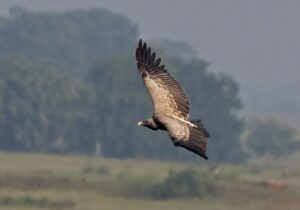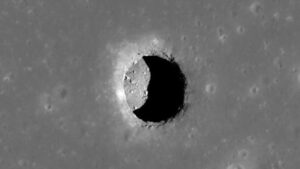A passion for the natural world drives many of our adventures. And when we’re not actually outside, we love delving into the discoveries about the places where we live and travel. Here are some of the best natural history links we’ve found this week.
China’s Mars rover takes a selfie: This week, China’s Zhurong rover sent three images from Mars back to Earth. One of those was a selfie. The little robot positioned a wireless camera on the ground, then maneuvered backward to trigger a photo of itself. The other two photos show the horizon from the landing site and the rocket-powered landing platform used by the rover.
Scientists discover the origins of a deadly flood in India: In February, a massive flood hit the state of Uttarakhand in India. It wiped out two hydroelectric plants and left 200 people dead. What caused the flood has been a mystery. Conspiracy-minded villagers even blamed buried nuclear devices in the surrounding mountains. Now a team of 50 scientists thinks that they have solved the case. They conclude that an avalanche of rock and glacier ice fell 1,800m down nearby Ronti Peak, triggering a cascade of events. “This was a multi-hazard scenario where [the falling material] was much more fluid and mobile than a landslide…It was a worst-case scenario of rock and ice and [the] height of the fall,” says Daniel Shugar, a geomorphologist at the University of Calgary in Canada.
Australia’s largest-ever species
New dinosaur discovered in Australia: A new dinosaur has been discovered in Australia. The Australian cooperensis is a sauropod, a herbivore with a long tail and neck. It’s 5 to 6.5m tall at the hip and 25 to 30m long. It could have weighed up to 74,000kg. Its gigantic size classes it as a titanosaur, a group of the largest land animals ever to walk the Earth. It is Australia’s largest-ever species. “Australotitan adds to the growing list of uniquely Australian dinosaur species discovered in Outback Queensland,” said Dr. Scott Hocknull.

Around 4,000 nerve fibres connect to a single neuron. Image: Google/Lichtman Laboratory
The most detailed map of a piece of the human brain: Google has helped create the most detailed map of connections within the human brain. The map shows 50,000 cells, connected by 130 million synapses, in three dimensions. Though researchers have been able to create the map, they have not been able to study the data set that it has produced, which is about 700 times larger than the storage capacity of a modern computer.
Massive range loss for African great apes: A new study predicts that the range of Africa’s great apes –- gorillas, chimpanzees, and bonobos –- will shrink massively over the next 30 years. The main causes of this decline will be climate change, land use, and human population growth. This is the first study to look at all three causes together. The best-case scenario suggests that the apes will lose 85 percent of their habitat by 2050. The worst-case scenario predicts that they will lose 94 percent.
Just two Antarctic glaciers could raise sea level by several feet
Pine Island Glacier’s ice shelf is ripping apart: Pine Island Glacier is one of the fastest moving glaciers in Antarctica. For years, the ice shelf that it flows into has held it back. But in the past four years, this ice shelf has thinned dramatically and large icebergs from its edges have broken off. This weakening shelf edge has shortened the time until the Pine Island Glacier inevitably collapses into the sea. The glacier contains approximately 180 trillion tons of ice, the equivalent of half a metre of global sea-level rise. Over the next few centuries, its disappearance, along with that of the neighboring Thwaites Glacier, could raise sea level by several feet.

The Roman basilica in Tel Ashkelon National Park. Photo: Emil Aladjem/IAA
Ancient Roman basilica uncovered: Israeli archaeologists have uncovered the remains of a 2,000-year-old Roman basilica in Tel Ashkelon National Park, Israel. They found dozens of column capitals with plant and eagle motifs that symbolized the Roman Empire. “During the Roman period, the public life of Ashkelon revolved around its basilica,” said the archaeologists.






